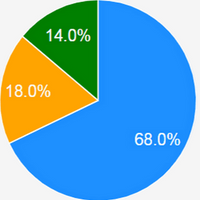Track Internet disconnections, provider outages with historical data, and automated speed testing.
For Windows, Linux, ARM64, ARMa7. Learn more by visiting www.outagesio.com
Notice: If you created an account on app.outagesio.com, simply use the same credentials to log in here.
The nature of TCP/IP and Internet connectivity
-
Some members may be a little unsure of what some of the reports mean and how it all works. While we try to document and explain everything possible, we are in ongoing development so constantly updating, fine-tuning and working on better ways of representing the information for you. Because of this, we could fill the site with countless documents but that could be even more confusing and isn’t our goal.
Keeping things simple
The goal of this service is to give information that is helpful to both the IT technician and the average person, consumers who may not be involved in or even care about technology other than using it. We’ll try to keep the tech talk to a minimum when we explain how data is being represented.
In this brief article, we explain a few important things that you may see now and then to give you a better understanding of what is going on.
Basics: Internet communications
All connectivity from your PC to a destination somewhere on the Internet is done using a specification called the Transmission Control Protocol/Internet Protocol (TCP/IP) which works by sending and receiving packets of data. When you connect to a site over the Internet, that information, or packets, take a certain path to and from the site based on where and when the packet was transmitted or received.
"Where" means the physical location of the web site you are wanting to use – where the server physically resides that the website is hosted on. "When" means the path taken to that site, which could change at any moment if a device (routers, switches, firewalls, and others) along the way has a problem or changes its path for any reason at all. Your data packets will take a different route to the same site you are connecting to. This mostly happens without you even noticing because it happens quickly, but sometimes you can tell there was a blip.
Browsing example
For example, you might have a browser with two tabs open to different web sites. The site in tab one might be reachable while the site in tab two is unavailable. This could mean that the unreachable site is experiencing problems or it could mean that the path to that site experienced problems.
Now, imagine you have both tabs open to the same site and notice that you can reach the site from one tab but not the other for a few seconds. This could mean the path taken to the same location changed somewhere along the way and took a moment to recover.
If both sites in both tabs cannot be reached, there is a good chance that your Internet connection has been interrupted in some way.
The nature of TCP/IP
TCP/IP by its very nature can take different paths to the same location if you are connecting to the same location with one or multiple browser tabs. Something becoming unreachable doesn’t automatically mean that your local Internet connection is experiencing problems.
Of course, our mission is to help you to know what is going on. When you start monitoring your service using OutagesIO, you will start to see what is ‘normal’ and what are reliability issues.
If you see very large numbers of short outages in your reports, you might want to search these forums for ‘Excessive outages‘ for a brief explanation of what might be happening.
Cable provider Internet access
If your service is brought to you by a cable or wireless provider then keep in mind that you could experience not only TCP/IP problems but signal issues as well.
Because of this, it becomes a bit harder to diagnose where problems might be. Being armed with plenty of facts is what our troubleshooting services are all about.
-
 O OutagesIO_Support referenced this topic on
O OutagesIO_Support referenced this topic on
-
K KelAuth referenced this topic on
